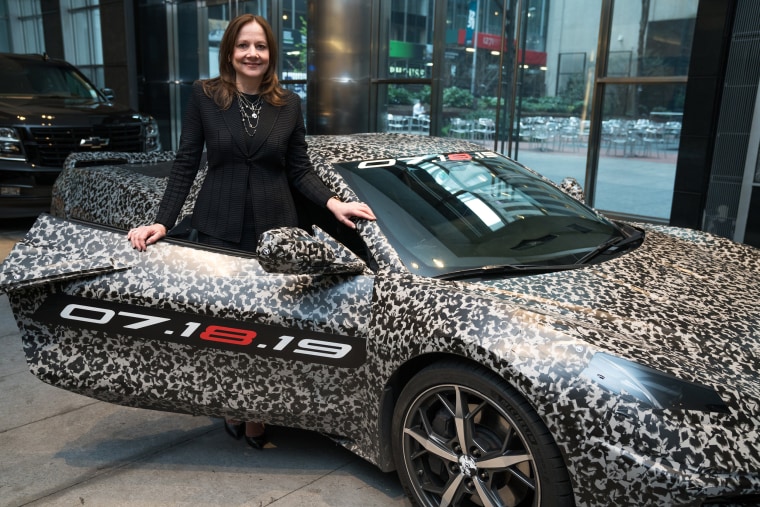The world of supercars is dominated by makes from across the pond — Ferrari, Lamborghini, McLaren. The Chevrolet Corvette has always been a more-bang-for-the-buck challenger with an Achilles heel that prevents world domination: its front-mounted engine is in the wrong place.
With her announcement last night that the next-generation Corvette is to be revealed July 18, General Motors CEO Mary Barra all but confirmed America's longest-running sports car is about to get a long-awaited upgrade - mid-engine placement that will put it in the same league as those European rockets.
(Some fans of the Ford Mustang, first sold in 1964, say it's the longest-running U.S. sports car because Corvette, first available to buyers in 1953, skipped the 1983 model year to facilitate development of a new generation. Calling the Mustang, a four-seat coupe, a sports car, is debatable, however).
Barra, speaking Thursday at a New York event to honor families of first responders killed in 9/11, did not outright say the engine would be placed behind the driver, but she appeared with a camouflaged eighth-generation Corvette that has the short nose and long rear of a typical mid-engine vehicle.
"Were not confirming or commenting on the engine even though it’s highly speculated," said Chevrolet spokeswoman Kelly Cusinato.
Mid-engine placement, considered ideal for racing because it results in better handling, is a foregone conclusion among Corvette aficionados, many of whom are giddy that, instead of being a front-engine drag racer, the next Corvette is likely to be more of a global track star.
"I think having a mid-engine will welcome new Corvette enthusiasts to the family," said Katie Ellison, editor of America’s Sports Car Magazine and marketing and communications manager at the Corvette Museum in Bowling Green, Kentucky, where the Corvette is built.
She noted that it was long the dream of the late godfather of Corvette, Zora-Arkus Duntov, to put the motor in the middle. On Saturday corvetteblogger.com noted that the camouflaged Corvette revealed by CEO Barra includes an image of Duntov.
Some auto reviewers believe the highest-performance version of today's Corvette has more horsepower (755) than its front-engine layout can handle. What's more, bringing the European layout to the vehicle will make it appeal to younger buyers at a time when the Corvette's stereotypical customer spends most of his time in a recliner.
"We're already seeing the age trending downward," Ellison said.
One question among Corvette fans is whether GM can maintain it as a performance bargain. Prices today start at $55,000 and reach into the low $100,000s compared to roughly $200,000 and up for the European competition. Mid-engine development is likely to add thousands to the sticker.
"It’s the most affordable sports car out there," Ellison said. "I'm sure it will be a little more expensive, but Chevrolet doesn't want to lose its core customers."
CORRECTION (April 13, 2019, 4:25 p.m. ET): An earlier version of this article misstated what day General Motors CEO Mary Barra spoke at an event to honor families of first responders killed in 9/11. She spoke on Thursday, not Friday.

